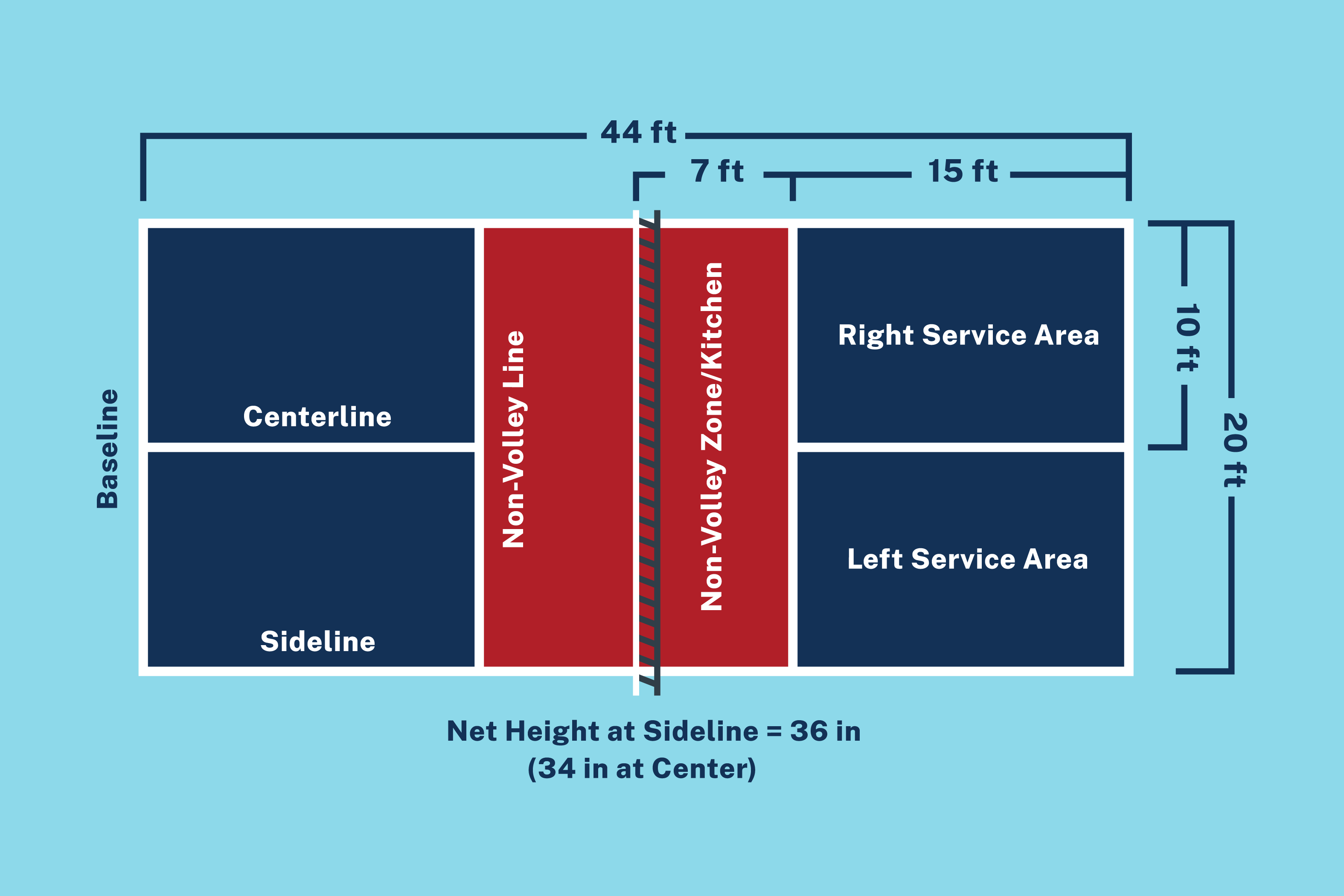The Leading Pickleball Judiciaries Design & Construction Specialists in Illinois and Midwest
Key Consider the Building And Construction of Pickleball Courts: From Website Selection to Last Finishes
The building of pickleball courts includes an array of critical elements, beginning with the choice of a proper website that stabilizes accessibility with environmental considerations. Vital aspects such as court measurements, surface area products, and drain systems substantially affect not just the top quality of play yet additionally the long life of the center.
Website Option Standards
When beginning on the building of pickleball courts, it is important to toenail down the site choice criteria that will ensure optimal playability and accessibility. The place should be easily reachable for gamers, preferably located near domestic areas or recreation center, to urge engagement.
Additionally, the terrain ought to be level and secure, as unequal ground can result in safety threats and influence gameplay. Ample drain is also critical; picking a website with good water drainage will help maintain court problems during adverse climate.
One more vital factor to consider is the accessibility of utilities. Accessibility to electrical power and water is needed for lighting and upkeep purposes. In addition, distance to car parking centers is vital, facilitating very easy gain access to for gamers and spectators alike.
Ecological elements can not be forgotten; natural color from trees can enhance gamer comfort, while direct exposure to prevailing winds may interfere with play. Zoning guidelines and community support must be considered to ensure that the task aligns with regional standards and obtains the backing it needs for successful execution. By carefully examining these criteria, stakeholders can produce a welcoming and useful setting for pickleball enthusiasts.
Court Dimensions and Design
To make certain optimum gameplay and adherence to policies, the dimensions and design of pickleball courts have to be carefully defined. A common pickleball court gauges 20 feet in size and 44 feet in size for both songs and increases play. The recommended design consists of a non-volley area, generally described as the "cooking area," expanding 7 feet from the web on either side. This location is essential, as it influences player positioning and shot choice - Illinois and midwest.
The web elevation is evaluated 36 inches at the sidelines and 34 inches at the center, producing a small dip that affects ball trajectory. Court markings are equally vital; lines need to be 2 inches vast and unique in color to guarantee visibility.
Additionally, a buffer area bordering the court is recommended, generally extending 5 to 10 feet past the sidelines and standards to accommodate players' movements and boost safety and security. Appropriate layout and measurements not just guarantee conformity with main policies yet also boost the total having fun experience, accommodating both entertainment and competitive play. Mindful preparation in these locations is vital to the successful building and construction of pickleball courts.
Surface Area Material Options
Choosing the ideal surface product for pickleball courts is critical for ensuring optimal player efficiency and safety and security. The choice of surface can considerably impact gameplay, consisting of ball bounce, grip, and player convenience.
There are several alternatives offered, each with its distinctive attributes. Asphalt is a popular option due to its durability and low upkeep requirements. It supplies a solid playing surface area that can withstand different weather conditions yet may need routine resurfacing.
Concrete is another commonly made use of material, providing exceptional longevity and a smooth coating. It permits constant round bounce but can be difficult on gamers' joints, making it much less desirable for long-lasting play without appropriate padding.
For those seeking improved convenience and shock absorption, supported acrylic surface areas present a feasible option. These surface areas incorporate a base layer with an acrylic topcoat, offering enhanced grip and a softer feeling, which is beneficial for decreasing the danger of injuries.
Last but not least, artificial turf is gaining traction, especially for multi-purpose facilities. Its adaptability and reduced upkeep requires make it an eye-catching alternative, though it might not give the very same ball response as traditional hard courts. Careful consideration of these choices will guarantee an ideal playing environment.
Drainage and Lighting Considerations
Proper drainage and effective illumination are crucial parts in the building and construction of pickleball courts, dramatically affecting both playability and security. Appropriate drain systems avoid water accumulation, which can lead to unsafe surface areas and damages to the court structure. A well-designed water drainage strategy integrates sloped surfaces and ideal products to help with water flow far from the playing location - Illinois and midwest. This not only preserves the honesty of the court look these up however also decreases downtime as a result of bad weather condition conditions.
Lighting is equally vital, particularly Related Site for courts meant for night usage. The positioning of lights components need to be purposefully planned to eliminate shadows and provide even distribution of light across the court.

Final Surfaces and Maintenance
After attending to water drainage and lights factors to consider, attention turns to the final finishes and ongoing upkeep of pickleball courts. Illinois and midwest. The selection of surface area product is vital, as it influences both playability and longevity. Usual alternatives consist of acrylic finishes and specialized sports surfaces that provide optimal grip and padding. These surfaces should be used in numerous layers to make sure durability against weather components and put on.

Seasonal upkeep could include resurfacing every couple of years, relying on usage and ecological variables. Correctly keeping webs, court lines, and surrounding locations is equally crucial to give a safe and satisfying having fun experience. By buying high quality surfaces and sticking to an organized maintenance routine, facility proprietors can guarantee their pickleball courts remain in outstanding condition for several years ahead.
Conclusion
In verdict, the successful construction of pickleball courts pivots on thorough interest to several vital aspects. Quality surfaces and a robust maintenance routine are vital for preserving the court's problem, improving the overall experience for gamers and spectators alike.